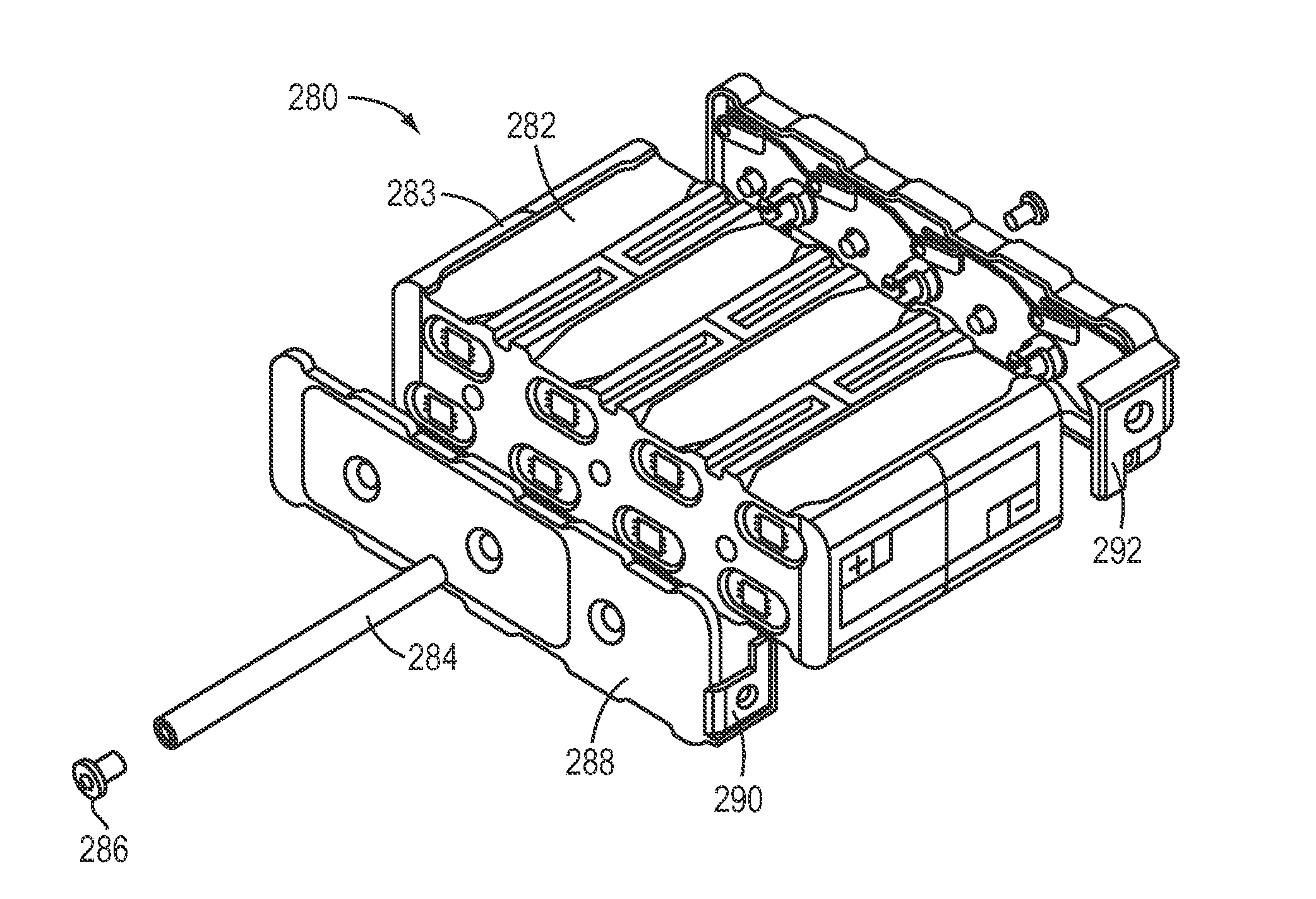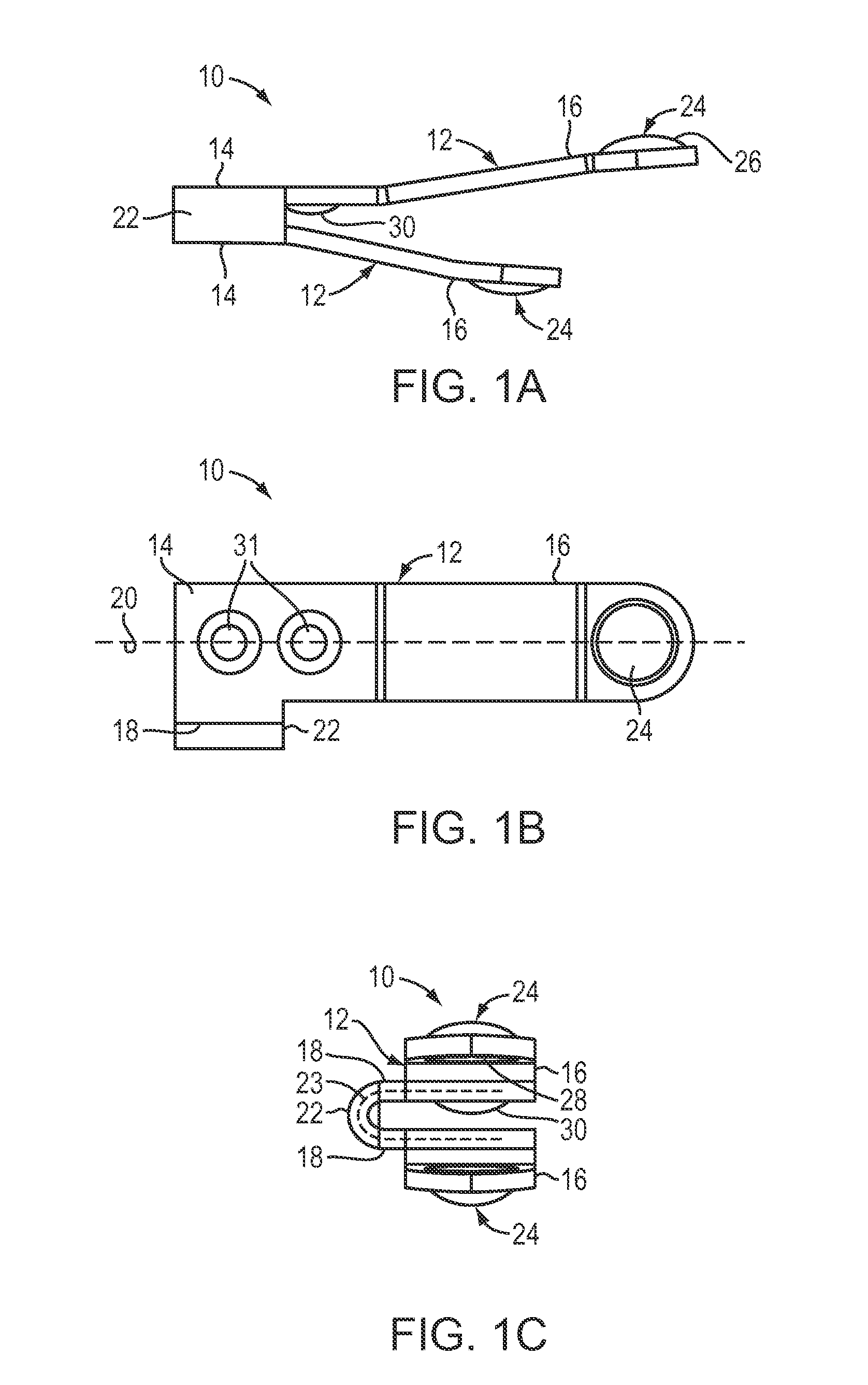Modular battery system and components
a module battery and battery system technology, applied in the direction of batteries, cell components, coupling device connections, etc., can solve the problems of affecting the performance of the battery system and the device as a whole, adding to the expense of maintenance associated, and consuming enough electricity for the device to require a conventional secondary, etc., to achieve convenient assembly and assembly, and convenient fabrication
- Summary
- Abstract
- Description
- Claims
- Application Information
AI Technical Summary
Benefits of technology
Problems solved by technology
Method used
Image
Examples
Embodiment Construction
[0075]The teachings of all patents, published applications and references cited herein are incorporated by reference in their entirety.
[0076]The invention generally is directed to a battery cell connector, an interconnect board for connecting a plurality of cells, a battery block system and a battery system for use with secondary (rechargeable) batteries, such as lithium ion, nickel cadmium, nickel-metal hydride and lead acid batteries. The various embodiments of the invention facilitate convenient assembly of multiple batteries, blocks of batteries, battery modules and systems that enable monitoring of subunits of the battery systems, such as individual blocks or modules of the battery system, and simplified removal and replacement of blocks and modules, as necessary, when monitoring indicates that such replacement is necessary.
[0077]As defined herein, a “battery block,” is a collection of cells constrained together in a predetermined orientation.
[0078]Also, as defined herein, a “b...
PUM
| Property | Measurement | Unit |
|---|---|---|
| distance | aaaaa | aaaaa |
| electrically-conductive | aaaaa | aaaaa |
| cross-sectional area | aaaaa | aaaaa |
Abstract
Description
Claims
Application Information
 Login to View More
Login to View More - R&D
- Intellectual Property
- Life Sciences
- Materials
- Tech Scout
- Unparalleled Data Quality
- Higher Quality Content
- 60% Fewer Hallucinations
Browse by: Latest US Patents, China's latest patents, Technical Efficacy Thesaurus, Application Domain, Technology Topic, Popular Technical Reports.
© 2025 PatSnap. All rights reserved.Legal|Privacy policy|Modern Slavery Act Transparency Statement|Sitemap|About US| Contact US: help@patsnap.com



